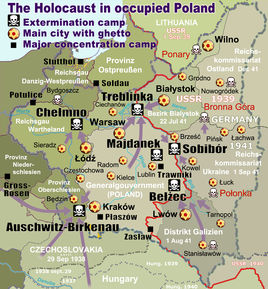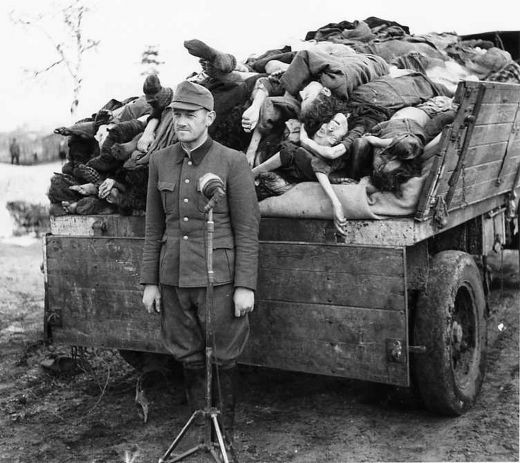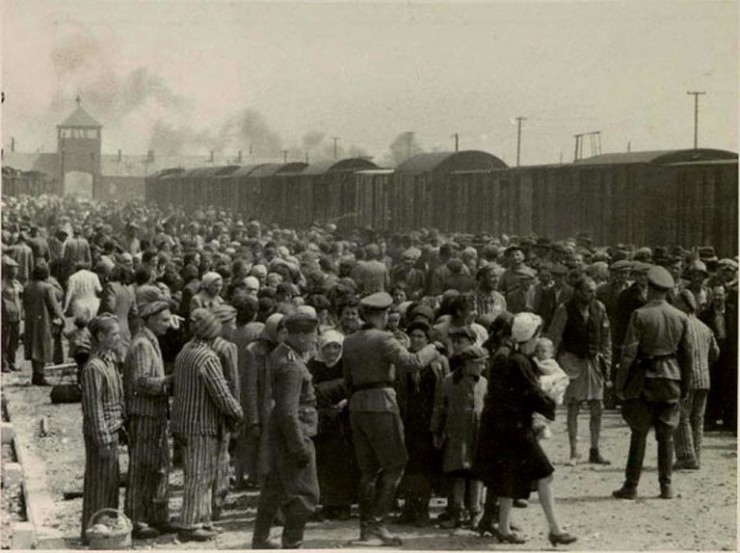Auschwitz-Birkenau ... Horror Tourism
"The realities of mass tourism that is destroying Venice and Amsterdam are destroying Auschwitz."
"Where do you put the public toilets at Auschwitz? People always complain about Auschwitz as a tourist site and, of course, with so many people wanting to visit, it cannot be anything but a tourist site. This is the reality of mass tourism."
"We are entering the last decade of having survivors with us who are able to testify as eyewitnesses. Along with losing the eyewitnesses, the site itself, in its present, sprawling form, cannot be maintained forever. We are losing another touchstone of authenticity."
"One of the problems with the success of Auschwitz is that other places of the Holocaust are suffering. Dachau, for example, has too few visitors and Auschwitz has too many. It would be good if the wealth could be spread."
There are buildings that are really fragile ruins and you really don't want anyone to step on those ruins and there are always people who will ignore it. You see from time to time groups of Israeli students climb on the roof of the crematorium to wave a flag. It really is problematic from the point of view of preserving those ruins."
"We have no other comparable catastrophe, if there is any comparable catastrophe, that we have so many artifacts with personal stories attached to them. The Holocaust is, in general, still the best-documented genocide in world history."
Robert Jan van Pelt, architecture professor, University of Waterloo

"In a few years there won't be a single survivor of the camps left, there is no getting away from that."
"While we remain alive, as eyewitnesses, we have to testify to what has happened and to the importance of it."
"Everybody comes out of there [Auschwitz] a changed person. History is the greatest teacher. We need to remember history. We cannot hide history."
"It's not for the past. It's for the sake of the future."
Auschwitz survivor Paul Herczeg, 90, Montreal resident
"Auschwitz has been a relatively manageable symbol for Germany after the Second World War, significantly reducing the actual scale of the evil done."
"The gates and walls of Auschwitz can seem to contain an evil that, in fact, extended from Paris to Smolensk."
"Yet while Auschwitz has been remembered, most of the Holocaust has been largely forgotten."
Timothy Snyder, historian, Black Earth
/https://public-media.si-cdn.com/filer/Auschwitz-gateway-631.jpg)
 |
This survival of Auschwitz inmates went beyond piecing together the carefully contrived mechanism of state murder of millions. Most of the Holocaust-era destruction of European Jewry, points out Mr. Snyder took place even before Auschwitz-Birkenau set out to systematically, methodically and swiftly finish that Final Solution genocide meant to spare none whatever. Forced labour and death camp, both, the complex camps that are part of Auschwitz are less than an hour's drive from Poland's second largest city, Krakow, once home to 68 thousand Jews.
According to the Auschwitz-Birkenau State Museum, over 2,320,000 visitors came to the world-renowned site in 2019. The guard towers, gates and crematoria serve as testament to the agony and anguish of the inmates and the fierce determination of the Third Reich to destroy their presence for posterity. Among the inmates, Roma, gays, political prisoners, dissenters, Russians and Poles but mostly Jews marked for destruction. It is where an estimated 1.1 million people were gassed and incinerated; almost a million of them Jews. It is the survivors who bring to agonizing life the trials of those who perished. They, in their aged sorrow, stand witness to history.
 |
| Bodies of victims |
In 1944 when the camp was operating at peak efficiency it covered 40 square kilometres with sub-camps extended beyond that acreage. Private hands today hold much of the property, outside the state museum. Some of the old barracks that once held starving prisoners being worked to death are now in people's gardens. "There is enormous pressure of development all around the site. Private business is very much exploiting the economic opportunity that comes from 2.3 million visitors", explained Mr. van Pelt.
"It is a very important historical site and for the last five or six years there has been construction around it. People are developing their property. Now you are in a neighbourhood. Inside Birkenau, there is only a barbed-wire fence. There is incredible transparency You can see what is happening on the other side. You can see the parking lot, you can see the reception centre, the businesses."
Auschwitz Birkenau, a tourist site, a business opportunity, a Polish 'world heritage' site.
 |
| Arriving at Auschwitz |
Labels: Auschwitz-Birkenau, European Jewry Annihilation, Holocaust, World War II

<< Home